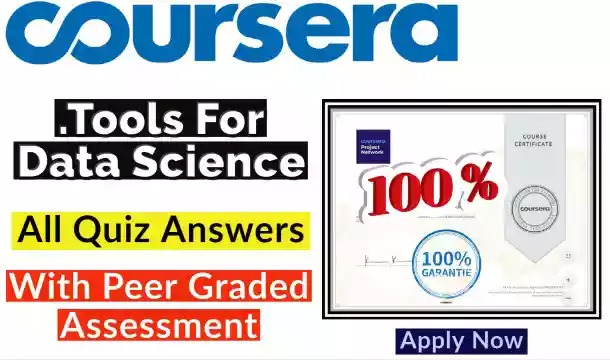In this blog you will find the correct answer of the Coursera quiz Organizational Behavior How to Manage People Coursera Answer mixsaver always try to brings best blogs and best coupon codes
Week 1- Motivation
1.
Question 1
Maslow’s Hierarchy of Needs, despite not having much empirical support, is an important reference for understanding motivation. Look at the needs listed below. The first one at the top of the list should be the top of the pyramid. The one at the bottom of the list should be the bottom of the pyramid. However, two in this list are out of order and need to be swapped in order for the list to reflect the hierarchy of needs. Which are they? (Lecture 2)
1 point
- Self-actualization
- Esteem
- Physiological needs
- Safety
- Social
2.
Question 2
What is the major distinction
between Maslow and McClelland’s approach to needs? (Lecture 3)
1 point
- McClelland views needs as
dynamic, Maslow as static. - McClelland’s theory recognizes that different needs can actually occur simultaneously. Maslow sees needs restricted to different stages; people experience them one at the time.
3.
Question 3
According to Hackman, there are
three job dimensions that managers should include in job design that produce
the psychological states yielding positive outcomes. What are those three core
job dimensions? (Lecture 4)
1 point
- Feedback
- Autonomy
- Skill variety, task identity and task significance
- A living wage
4.
Question 4
Research shows that when it comes to goals, they don’t necessarily need to be specific to be motivating. (Lecture 6)
1 point
- False
- True
5.
Question 5
In clip 7, Prof. Raes discusses
Vroom’s Process Theory. In this theory, valence is a key component that,
combined with expectancies and instrumentality, must be present in order for
there to be motivation. What does Vroom mean by “valence”?
1 point
- The extent to which the reward linked to the performance is actually valuable to you. In other words, the reward is relevant and important and worth the effort.
- The extent to which the challenge associated with the goal is something achievable, given your abilities and experience.
6.
Question 6
According to McGregor, managers
have either an “X” or ”Y” expectation of their employees. A self-fulfilling
prophecy emerges from how the manager views the employees. What did he mean by
that? (Lecture 8)
1 point
- Employees are either lazy or
motivated to contribute. The manager’s job is to figure out which of the two
they are and develop his or her management style accordingly. For the former,
it would be very authoritative. For the latter, the manager would give
employees greater autonomy and recognize their ability. - If managers expect
employees to be lazy, those are the expectations that the employees will
fulfill. If the manager expects them to be hardworking and motivated to
contribute, this is how they will in fact act.
7.
Question 7
According to Equity Theory (Lecture 9):
1 point
- People care about the ratio of
their inputs to outcomes being equal compared to other, relevant people. - Both of the above are
correct. - People care about being treated fairly and equally.
Week 2 – Leadership
1.
Question 1
In Lecture 2, Prof. Raes says that leadership is…: (Check all that apply.)
1 point
…embedded in relationships between leaders and followers.
…something people are born with.
…a process.
2.
Question 2
Because personality traits are
stable, one of the disadvantages of trait theory is that it doesn’t consider
the possibility that individuals can actually develop into leaders. (Lecture 3)
1 point
False
True
3.
Question 3
According to the Ohio and
Michigan Studies, effective leaders manifest mostly
task-oriented behavior. (Lecture 5)
1 point
True
False
4.
Question 4
In Lecture 6, the Situational Leadership
Model states that leaders can actually exhibit all four different leadership
styles, depending on what the situation or context calls for. What are they? (Check all that apply.)
1 point
Directing
Delegating
Supporting
Coaching
Commanding/Executing
5.
Question 5
According to Hersey & Blanchard, when is it appropriate to use a more directive leadership style? (Lecture 7)
1 point
Most of the time
When followers are less
experienced than the leader
When followers are
neither committed nor competent
6.
Question 6
Leader-Member-Exchange theory emphasizes the value of relationships between leader and follower. Why? (Lecture 8)
1 point
Because empirically
we know that the better the relationship, the more effective the leadership.
Because it’s important for a
leader to get to know the personalities and competencies of the people on his
or her team in order to create the most effective team possible.
7.
Question 7
A high quality relationship,
according to the Leader-Member-Exchange theory in Lecture 8, is characterized by: (Check all
that apply.)
1 point
Concern
Support
Caring
Delegating
Involving followers
in decisions
Communicating how
individuals contribute to collective outcomes
Remembering employees’
birthdays
Week 3 – Teamwork
1.
Question 1
A good leader can make any team
perform well. (Lecture 2)
1 point
False
True
2.
Question 2
According to Hackman, which of
the following factors can a leader influence in order to build a
well-functioning team? Please check all that apply. (Lectures 2 & 3)
1 point
Have expert team coaching
Establish an enabling
structure (i.e., activities should align)
Articulate a
compelling direction
Provide contextual support
Create a “real team”
(i.e., define boundaries)
Develop him or herself into a stronger, more authoritarian leader
3.
Question 3
What are some of the benefits of team diversity, according to the positive information elaboration perspective? Please check all that apply. (Lecture 4)
1 point
Mutual learning and respect
More creative solutions
Better problem solving
Members receive affirmation from each other for thinking alike
Better customer understanding
4.
Question 4
To make diversity produce desired outcomes, in Lecture 5 Prof. Raes recommends the following: (Check all that apply.)
1 point
Ensure that your team is diverse no matter what. Any diversity produces more beneficial results than no diversity.
Develop a diversity mind-set. When building a diverse team, tensions may be higher precisely because of the difference of opinion. Building an awareness of the benefits of diversity can help ease these tensions.
Analyze the team task. If complex, diversity benefits will outweigh costs. The opposite may be true if the task is simple.
Decide which diversity dimensions are relevant and beneficial to the work. For some tasks, diverse age and gender are helpful, while for others academic background or different perspectives make more important contributions.
Align the team towards a common vision. Though opinions and approaches to problem-solving may vary, all the team members need to be working towards the same objective.
5.
Question 5
There is no proof that
homogenous teams have advantages over diverse teams. (Lectures 4 & 5)
1 point
True
False
6.
Question 6
In Lecture 6 we learn that process conflict can be particularly helpful at: (Check all that apply.)
1 point
…the beginning of a project.
…the end of a project.
7.
Question 7
If you want your team to
perform well, you should expect each member to contribute an equal amount of
speaking to group communication. (Lecture 7)
1 point
True
False
8.
Question 8
Psychological safety an
important factor in creating a positive team environment. Which of the
following scenarios would not be conducive to creating this type of
environment? Please check all that apply. (Lecture 7)
1 point
Team members make
scornful comments when someone expresses a new idea.
A subgroup of team
members tends to agree on most things and impose their views on the rest.
All team members feel comfortable brainstorming solutions and participate equally in expressing their ideas.
Week 4 – Culture (Part 1)
1.
Question 1
One possible definition of culture is: how we do things in a specific group of people, be it a family, an organization, a community or a country. (Lecture 3)
1 point
True
False
2.
Question 2
What are some of the functions of culture? (Lecture 3)
1 point
Stability of social systems
Identification, belonging
All of the above
Motivation to act; a direction for your efforts
3.
Question 3
What does Schein mean by “espoused values”? (Lecture 4)
1 point
These are the values that guide behavior, the collective sense of how to do things.
The values that everyone in a culture explicitly agrees upon and is always aware of.
4.
Question 4
Once an organization has established a culture, it is still relatively easy to change it. (Lecture 6)
1 point
True
False
5.
Question 5
What are the three elements of cultural intelligence? (Lecture 7)
1 point
Mindfulness
Skills
Language fluency
Knowledge
6.
Question 6
Why isn’t cultural knowledge enough to adapt and be effective in a new environment? (Lecture 7)
1 point
Because when it comes to culture, there is a lot more than meets the eye.
Cultures change over time, so book “knowledge” often turns out to be too static.
Knowledge can lead to generalizations and stereotypes and these are often not helpful when you have to live in a day-to-day life in another country.
Really adapting requires a certain awareness of your own behavior and ability to modify it according to your environment.
All of the above
Important Links:
- Advanced Algorithms and Complexity Coursera Week 1 Quiz
- Business Analytics for Decision Making Coursera Week 1 Quiz
- Epidemiology: Successful Career Development Coursera Week 1
- How Things Work: An Introduction to Physics week 1
- Introduction to Public Speaking Coursera week 1 Quiz





